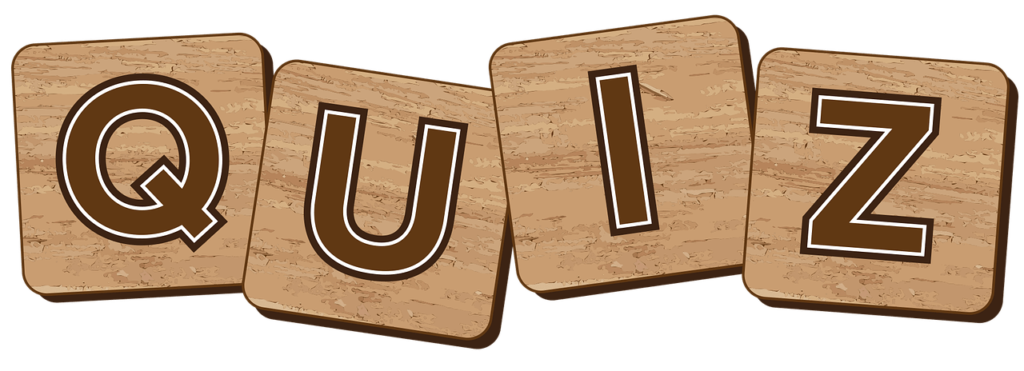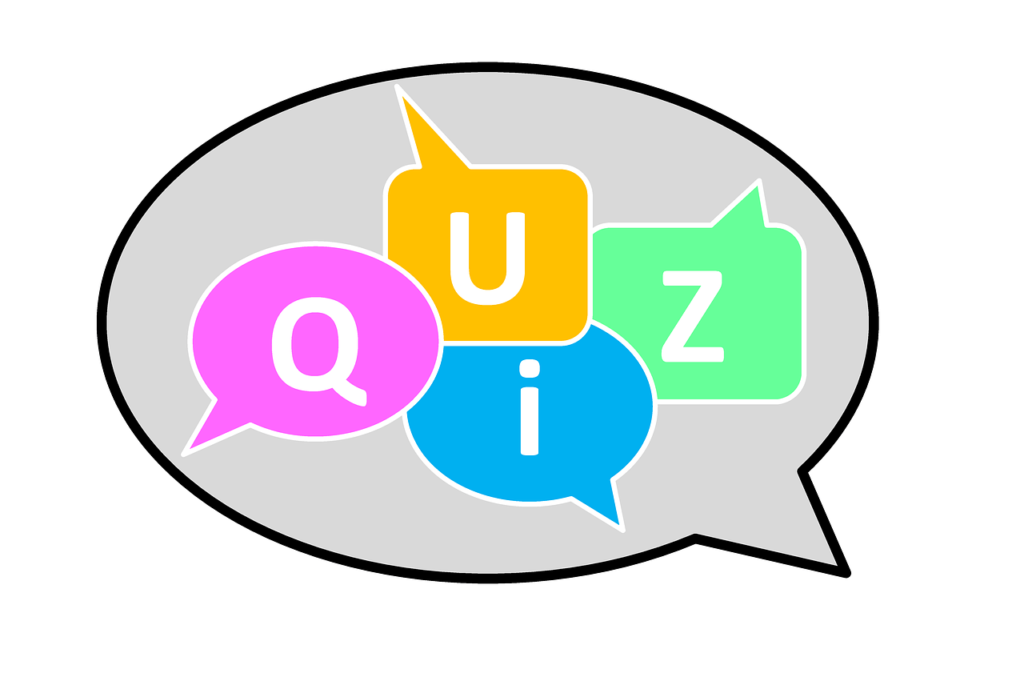The Role of a Game Tester in Quality Assurance
In “The Role of a Game Tester in Quality Assurance,” we delve into the essential responsibilities and impact of game testers in the game development process. Our journey begins with understanding how game testers identify and document bugs, ensuring that every aspect of the game meets high standards of performance and playability. We explore the indispensable contribution they make, from initial development phases to the final launch, ensuring a seamless and immersive gaming experience for players everywhere. Additionally, we highlight the skills and dedication required to excel in this crucial role within the industry. Have you ever wondered what the role of a game tester is in ensuring the quality of your favorite games? The gaming industry is a multi-billion-dollar enterprise that revolves around the production and distribution of engaging and functional games. At the heart of this industry are game testers, whose role in quality assurance (QA) is crucial but often misunderstood.
Introduction to Game Testing
Before diving into the intricacies of a game tester’s role, let’s first understand what game testing is. Game testing, also known as playtesting, is a procedure performed to identify bugs, glitches, and other issues that may impede the gaming experience. This process is an integral part of quality assurance (QA), which ensures that a game meets the high standards expected by consumers and stakeholders.
Why is Game Testing Important?
Think of game testing as the final checkpoint before the game reaches the hands of excited gamers worldwide. Poorly tested games can lead to negative reviews, reduced sales, and damaged reputations for game developers and publishers. Therefore, game testers act as the guardians of the gaming world, ensuring that every game delivers a seamless and enjoyable experience.
The Responsibilities of a Game Tester
A game tester wears many hats and undertakes various responsibilities throughout the life cycle of game development. Their tasks range from finding bugs to ensuring that gameplay mechanics work as intended. Here are some of their main responsibilities:
Identifying Bugs and Glitches
Game testers are primarily responsible for finding bugs and glitches. These could be anything from a character getting stuck in a wall to a game crashing after a specific action. Our mission is to identify these issues early so they can be fixed by the development team.
Verifying Compliance with Specifications
Different games have different specifications and requirements. Part of our job is to make sure that the game meets these predetermined criteria. This could range from technical specifications, such as frame rates and load times, to creative specifications like storyline and character development.
Testing Gameplay
Gameplay testing is another critical component. We focus on the user experience, paying special attention to the flow of the game, difficulty levels, and overall engagement. Our feedback helps developers fine-tune the game to make it as captivating as possible.
Console and Platform Testing
In today’s gaming world, games are available on multiple platforms like PC, Xbox, PlayStation, and mobile devices. Each platform has its own set of requirements and limitations. We ensure that the game performs optimally on all intended platforms.
Regression Testing
When a bug is fixed, it’s our job to go back and test it again to make sure the fix hasn’t caused new issues. This is known as regression testing, and it’s essential for maintaining the quality of the game as it evolves.

Different Types of Game Testing
Not all game testing is created equal. There are various types of testing methods used to ensure the game is ready for release. Each type serves a unique purpose and requires distinct skills and tools.
Functional Testing
Functional testing focuses on verifying the functionality of the game. This includes testing features like saving and loading files, level completion, scoring systems, and other core elements. It ensures that the game mechanics operate as intended.
Compatibility Testing
Compatibility testing is all about making sure that the game works across different devices, operating systems, and configurations. Given the wide range of hardware and software setups that gamers use, this is a critical aspect of game quality assurance.
Performance Testing
Performance testing aims to gauge the game’s performance under various conditions. This includes measuring frame rates, load times, and responsiveness during intensive gameplay scenes. We want to make sure that the game remains smooth and responsive, even during the most action-packed sequences.
Localization Testing
In an increasingly global market, games are often released in multiple languages and adapted for various cultures. Localization testing ensures that the game is properly translated and culturally appropriate for different audiences.
Usability Testing
Usability testing focuses on the player’s interaction with the game’s interface. We examine how intuitive and user-friendly the controls and menus are. This helps identify areas where players might struggle, allowing developers to make necessary adjustments.
Skills Required to be a Successful Game Tester
Being a game tester is not just about playing games all day. It requires a unique set of skills and qualifications to be effective in this role.
Attention to Detail
One of the most important skills for a game tester is a keen attention to detail. We need to spot even the smallest glitches or inconsistencies that might be overlooked by others.
Analytical Skills
Analytical skills are crucial for understanding the root cause of a problem. When we identify a bug, we need to dig deeper to find out what triggers it and how it can be replicated.
Communication Skills
Effective communication is vital. We have to clearly describe the issues we encounter to the development team, often through detailed reports. Clear and concise communication ensures that developers understand the problem and can fix it efficiently.
Technical Skills
A basic understanding of programming and game design can be incredibly beneficial. Although not always required, having knowledge of coding languages or software like unity can give us an edge in identifying and understanding issues.
Patience and Perseverance
Game testing can be repetitive and time-consuming. Patience and perseverance are key traits, as we often have to test the same scenario multiple times to ensure that a bug has been fixed or that a feature works as intended.
Collaborative Spirit
We work closely with developers, designers, and other testers. Being a team player and having a collaborative spirit helps in sharing insights and jointly solving problems.

Tools and Software Used in Game Testing
Various tools and software are essential to facilitate the game testing process. These tools help us identify, report, and track bugs, as well as automate repetitive testing tasks.
Bug Tracking Tools
Bug tracking tools like JIRA, Bugzilla, and Mantis help us log and manage bugs efficiently. These tools allow us to keep track of reported issues, their status, and the steps taken to resolve them.
Automation Tools
Automation tools like Selenium and QTP are used for automating repetitive testing tasks, saving time and increasing efficiency. These tools are particularly useful for regression testing and performance testing.
Debugging Tools
Debugging tools such as GDB and Valgrind help us pinpoint the exact location of a bug in the code. They are invaluable for diagnosing complex issues that are not immediately apparent.
Performance Monitoring Tools
Tools like FRAPS and GameBench allow us to monitor the game’s performance metrics, such as frame rates and load times. These tools help us identify performance bottlenecks that need to be addressed.
Network Analyzers
Network analyzers like Wireshark are used to monitor network traffic for online games. They help us identify issues related to connectivity, latency, and data transmission.
Stages of Game Testing
The game testing process is not a one-time activity but spans across various stages of the game development lifecycle. Each stage focuses on different aspects of testing to ensure comprehensive coverage.
Pre-Alpha Testing
Pre-Alpha testing is conducted in the early stages of game development. At this point, the game is still in a rough state, and testing is focused on identifying fundamental issues that could impede further development.
Alpha Testing
In the alpha stage, the game is more developed but still not feature-complete. Our testing efforts concentrate on identifying significant bugs and ensuring that the core mechanics are functional.
Beta Testing
Beta testing occurs when the game is feature-complete but may still have some bugs. This stage often involves a larger group of testers, including external participants, to identify issues that may not have been caught during alpha testing.
Release Candidate Testing
In this stage, the game is nearly ready for release. Testing focuses on final refinements and ensuring that the game meets all quality standards. Any remaining issues are typically minor and are quickly addressed.
Post-Release Testing
Even after the game is released, testing does not stop. Post-release testing involves monitoring feedback from players, identifying new issues, and rolling out updates and patches as needed.

Career Path and Growth Opportunities for Game Testers
Being a game tester can be a fulfilling career in itself, but there are also plenty of growth opportunities within the industry. Let’s explore some potential career paths and how we can progress in them.
Junior Game Tester
As a junior game tester, our primary role is to identify bugs and issues. This position usually requires close supervision, and the focus is on gaining experience and honing our skills.
Senior Game Tester
With experience, we can advance to a senior game tester position. In this role, we are responsible for more complex testing tasks and may also supervise junior testers. We are often involved in developing testing strategies and plans.
QA Lead
A QA Lead coordinates the activities of the game testing team. We work closely with developers and project managers to ensure that testing is aligned with the overall project goals. Leadership and project management skills are crucial in this role.
QA Manager
As a QA Manager, we oversee the entire QA department. Our responsibilities include developing quality standards, managing budgets, and ensuring that all projects meet the required quality benchmarks. This role often requires extensive experience and a deep understanding of quality assurance principles.
Transition to Other Roles
Experience as a game tester can also serve as a stepping stone to other roles within the gaming industry. Positions such as game designer, developer, or producer often value the insights and skills gained through QA experience.
Challenges Faced by Game Testers
While being a game tester has its perks, it also comes with its own set of challenges. Let’s take a look at some of the common hurdles we face in this field.
Repetitive Tasks
One of the main challenges is the repetitive nature of the job. Testing the same scenario multiple times to ensure consistency can become monotonous, and it requires a great deal of patience.
Tight Deadlines
Game development projects often operate under strict deadlines. This means that we sometimes have to work long hours to meet these deadlines, which can be stressful.
Limited Creative Input
Unlike game designers or developers, we usually have limited input into the creative aspects of the game. Our primary focus is on identifying and reporting bugs, which can sometimes feel less gratifying.
Keeping Up with Technological Advances
The gaming industry is continuously evolving, with new technologies and platforms emerging regularly. Staying up-to-date with these changes and acquiring new skills can be challenging but is essential for career growth.
Best Practices for Effective Game Testing
Despite the challenges, certain best practices can help us excel in our role as game testers. Incorporating these strategies into our routine can lead to more effective and efficient testing.
Develop a Test Plan
A well-structured test plan is critical for staying organized and ensuring comprehensive coverage. The test plan should outline the scope, objectives, resources, and schedule for testing activities.
Prioritize Issues
Not all bugs are created equal. It’s essential to prioritize issues based on their impact on the game. Critical bugs that affect the core gameplay should be addressed first, followed by less severe issues.
Use Both Manual and Automated Testing
A balanced approach that incorporates both manual and automated testing can yield the best results. While manual testing is excellent for identifying user experience issues, automated testing is efficient for repetitive and regression tasks.
Maintain Clear Documentation
Clear and concise documentation is vital for effective communication with the development team. Bug reports should include detailed descriptions, steps to reproduce the issue, and relevant screenshots or videos.
Test Incrementally
Testing incrementally as the game develops can help catch issues early. Regular testing and feedback loops ensure that problems are identified and resolved promptly, reducing the risk of major issues closer to release.
Stay Updated
Keeping up-to-date with the latest tools, technologies, and industry trends is essential. Continuous learning and professional development can enhance our skills and keep us competitive in the field.
The Future of Game Testing
The field of game testing is evolving with technological advancements, and the future looks promising. Emerging technologies and trends are set to transform the way we conduct game testing.
AI and Machine Learning
Artificial Intelligence (AI) and Machine Learning (ML) are poised to revolutionize game testing. These technologies can automate complex testing scenarios, predict potential issues, and analyze vast amounts of data to identify patterns and trends. This can make testing more efficient and improve the quality of the final product.
Virtual Reality (VR) and Augmented Reality (AR)
As VR and AR technologies continue to advance, game testing will need to adapt to these new platforms. Testing in these immersive environments presents unique challenges that require specialized skills and tools.
Cloud Gaming
Cloud gaming is gaining popularity, allowing players to stream games directly from the cloud. This shift will necessitate new testing strategies focused on network performance, latency, and compatibility with various devices and internet speeds.
Increased Focus on Security Testing
With the rise of online gaming, security has become a significant concern. Protecting player data, preventing cheating, and ensuring secure transactions are critical aspects that game testers will need to focus on more heavily.
Expanding Role of Testers
The role of game testers is expanding beyond traditional testing tasks. Involvement in the early stages of game design, collaborative problem-solving, and contributing to the overall player experience are becoming more common.
Conclusion
To sum up, the role of a game tester in quality assurance is multifaceted and essential for the success of a game. We are the gatekeepers who ensure that games are bug-free, engaging, and meet the high standards expected by players. Although the job comes with its challenges, the impact we have on the final product is immensely gratifying.
By developing key skills, staying updated with technological advancements, and adhering to best practices, we can excel in this dynamic field. As the gaming industry continues to evolve, our role will undoubtedly become even more critical, adapting to new technologies and platforms.
So, the next time you play a flawless game, remember the unsung heroes behind the scenes who worked tirelessly to make it a seamless and enjoyable experience. We are game testers, and we take immense pride in our role in the world of gaming.
Thank you for joining us on this journey through the fascinating world of game testing in quality assurance.



